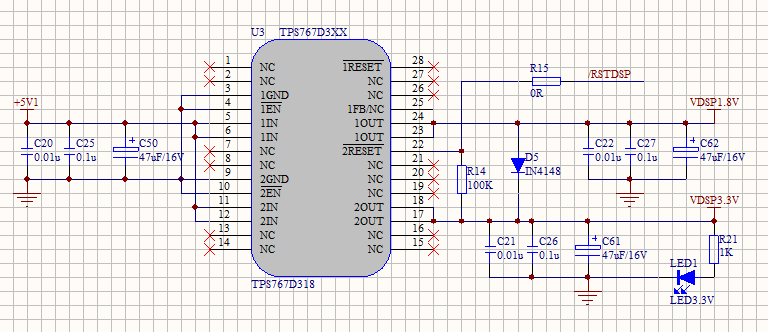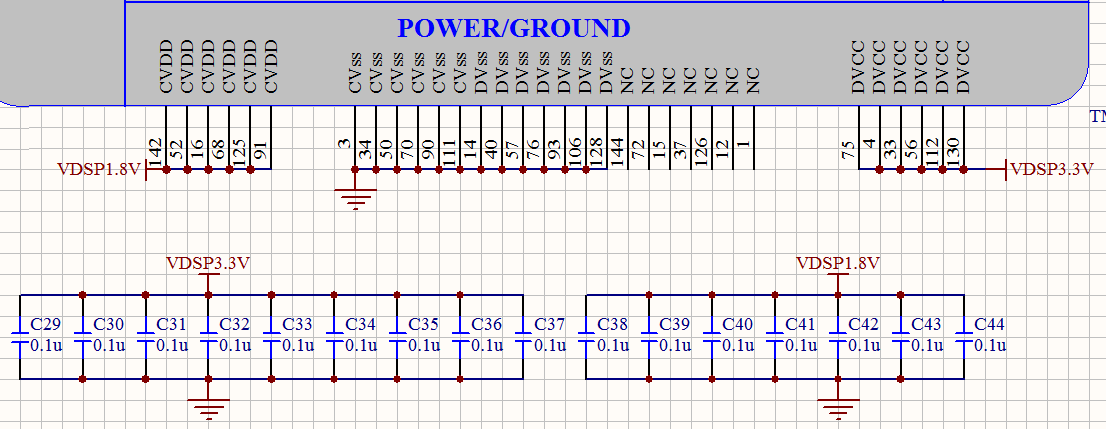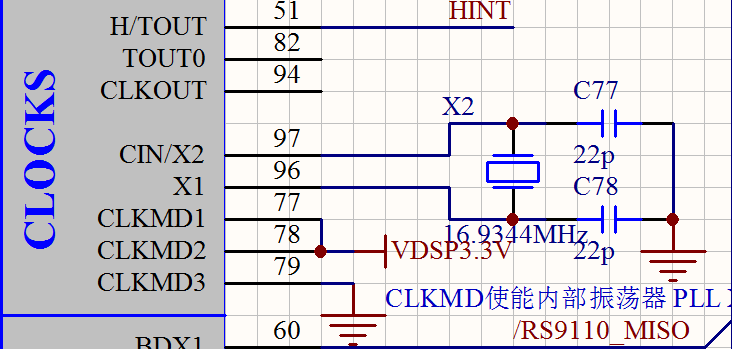Tool/software: Code Composer Studio
1、The /NMI and /BIO pins are all pulled up through the 10K ohm to the 3.3V;
2、All CVDD pins voltages are normal to 1.8V,All DVDD pins voltages are normal to 3.3V,All the VSS pins are normally connected to the GND;
3、The system power IC is TPS767D318, and the RESET signal is provided for the VC5402;
4、My target board is only VC5402 and TPS767D318, and all other peripheral circuits are not welded;
Part SCH follows:
The system power on, the x2 output sin wave,and the frequency is16.9344MHz,but the CLKOUT pin output square wave,and the frequency is 16.9344MHz, why?
To compare the test, I bought a SEED-MS5402 DSK board, CLKOUT output waveform, normal sine wave。
I've tested four TMS320VC5402 chips in all, and the problems are the same。




